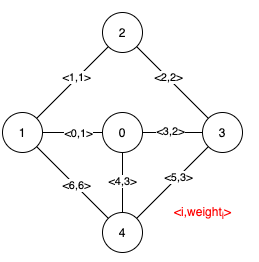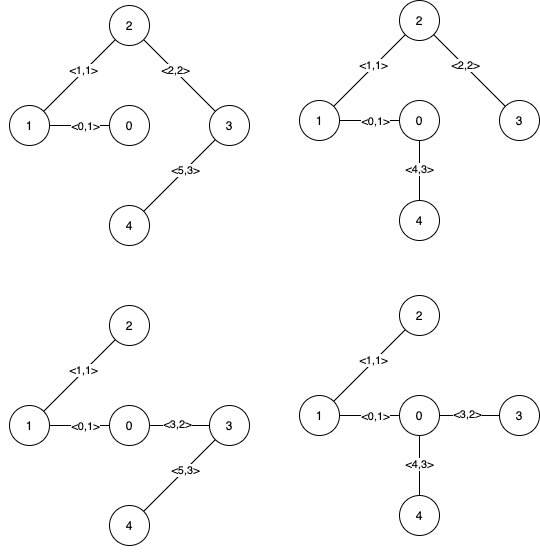1489.Find Critical and Pseudo-Critical Edges in Minimum Spanning Tree
===
###### tags: `Hard` `Union Find` `Graph` `Sorting` `Minimum Spanning Tree`
[1489. Find Critical and Pseudo-Critical Edges in Minimum Spanning Tree](https://leetcode.com/problems/find-critical-and-pseudo-critical-edges-in-minimum-spanning-tree/)
### 題目描述
Given a weighted undirected connected graph with `n` vertices numbered from `0` to `n - 1`, and an array `edges` where `edges[i]` = `[ai, bi, weighti]` represents a bidirectional and weighted edge between nodes `ai` and `bi`. A minimum spanning tree (MST) is a subset of the graph's edges that connects all vertices without cycles and with the minimum possible total edge weight.
Find *all the critical and pseudo-critical edges in the given graph's minimum spanning tree (MST)*. An MST edge whose deletion from the graph would cause the MST weight to increase is called a critical edge. On the other hand, a pseudo-critical edge is that which can appear in some MSTs but not all.
Note that you can return the indices of the edges in any order.
### 範例
**Example 1:**

```
Input: n = 5, edges = [[0,1,1],[1,2,1],[2,3,2],[0,3,2],[0,4,3],[3,4,3],[1,4,6]]
Output: [[0,1],[2,3,4,5]]
Explanation: The figure above describes the graph.
The following figure shows all the possible MSTs:
```

```
Notice that the two edges 0 and 1 appear in all MSTs, therefore they are critical edges, so we return them in the first list of the output.
The edges 2, 3, 4, and 5 are only part of some MSTs, therefore they are considered pseudo-critical edges. We add them to the second list of the output.
```
**Example 2:**

```
Input: n = 4, edges = [[0,1,1],[1,2,1],[2,3,1],[0,3,1]]
Output: [[],[0,1,2,3]]
Explanation: We can observe that since all 4 edges have equal weight, choosing any 3 edges from the given 4 will yield an MST. Therefore all 4 edges are pseudo-critical.
```
**Constraints**:
* 2 <= `n` <= 100
* 1 <= `edges.length` <= `min(200, n * (n - 1) / 2)`
* `edges[i].length` == 3
* 0 <= `ai` < `bi` < `n`
* 1 <= `weighti` <= 1000
* All pairs `(ai, bi)` are **distinct**.
### 解答
### Reference
[回到題目列表](https://marsgoat.github.io/XNnote/coding/leetcodeEveryDay.html)